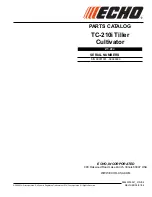
ARTC-SVX001B-EN
39
Table 7. Glycol performance impact factors
Range Factor
Glycol Concentration Percentages and Performance Impact
Propylene Glycol
Concentration
30%
40%
50%
Lowest Ambient Temperature
10 °F (-12 °C)
-4 °F (-10 °C)
-20 °F (-29 °C)
Recommended Minimum
Leaving Fluid Temperature
25 °F (-4 °C)
10 °F (-12 °C)
-10 °F (-23 °C)
Leaving Temperature
Capacity
Reduction
Factor
Pressure Drop
Factor
Capacity
Reduction
Factor
Pressure Drop
Factor
Capacity
Reduction
Factor
Pressure Drop
Factor
70 °F (21 °C)
0.96
1.27
0.93
1.43
0.91
1.63
60 °F (15.6 °C)
0.95
1.31
0.92
1.47
0.90
1.68
55 °F (13 °C)
0.95
1.31
0.92
1.50
0.89
1.73
50 °F (10 °C)
0.94
1.33
0.91
1.51
0.88
1.75
A 10% to 50% solution of glycol should be added to
prevent pipe corrosion regardless of the fluid
temperature. Propylene glycol has corrosion inhibitors
that protect piping and components from corrosion
and buildup of rust and other deposits. Trane
recommends against using water/glycol solution in
excess of 50% regardless of the ambient temperature
conditions.
N
NO
OT
TIIC
CE
E
E
Eq
qu
uiip
pm
me
en
ntt D
Da
am
ma
ag
ge
e!!
F
Fa
aiillu
urre
e tto
o ffo
ollllo
ow
w iin
nssttrru
uccttiio
on
nss b
be
ello
ow
w cco
ou
ulld
d rre
essu
ulltt iin
n
p
pe
errm
ma
an
ne
en
ntt d
da
am
ma
ag
ge
e tto
o p
pu
um
mp
p a
an
nd
d iin
ntte
errn
na
all cco
oo
olliin
ng
g
ssu
urrffa
acce
ess..
D
Do
o n
no
ott u
usse
e a
au
utto
om
mo
ottiiv
ve
e a
an
nttiiffrre
ee
ezze
e..
N
No
otte
e:: If glycol-free solutions are mandated at the
chiller site, special inhibitors are available for
rust prevention, mineral deposit inhibition, and
biological suppression. Adding these inhibitors
to the water solution is strongly recommended.
Heaters, heat tracing cable, and closed cell insulation
can be installed on any exposed “wet” chiller
components and tank and pump modules for
protection against freezing in low ambient temperature
and low refrigerant pressure conditions. However, the
best freeze prevention is using the appropriate
concentration of glycol. Trane does not warranty any
component that fails due to freezing.
Prevent Freezing
Many liquids expand in volume upon cooling. This
expansion may cause pipes and other enclosed
systems containing a liquid to rupture or burst when
exposed to low temperature conditions. Burst
protection is needed to protect piping and other
enclosed systems when they are inactive as they could
rupture due to expansion during cold weather or low
refrigerant pressure.
Freeze points and burst points of glycol-water solutions
are shown in
.
In order to maintain a high quality glycol solution, the
water used in the glycol mixture must have very few
impurities. Impurities in the water can increase metal
corrosion, aggravate pitting of cast iron and steel,
reduce the effectiveness of the corrosion inhibitors,
and increase the depletion rate of the inhibitor
package.
To assure inhibitor effectiveness, the levels of chlorides
and sulfates in the water should not exceed 25 ppm
each. The total hardness in terms of calcium carbonate
should be less than 100 ppm. For best long-term
results, de-ionized or distilled water is recommended.
Trane can provide concentrated solutions of Dowfrost,
propylene glycol, or premixed solutions for use with
the chiller.
N
NO
OT
TIIC
CE
E
E
Eq
qu
uiip
pm
me
en
ntt D
Da
am
ma
ag
ge
e!!
F
Fa
aiillu
urre
e tto
o ffo
ollllo
ow
w iin
nssttrru
uccttiio
on
nss b
be
ello
ow
w cco
ou
ulld
d rre
essu
ulltt iin
n
p
pe
errm
ma
an
ne
en
ntt d
da
am
ma
ag
ge
e tto
o p
pu
um
mp
p a
an
nd
d iin
ntte
errn
na
all cco
oo
olliin
ng
g
ssu
urrffa
acce
ess..
D
Do
o n
no
ott u
usse
e a
au
utto
om
mo
ottiiv
ve
e a
an
nttiiffrre
ee
ezze
e..
Propylene Glycol
Glycol-based fluids provide such burst protection in
water solutions due to their low freezing points. As a
glycol-based fluid cools below the solution’s freezing
point, ice crystals begin to form, and the remaining
solution becomes more concentrated in glycol. This
ice/water/glycol mixture results in a flowable slush, and
remains fluid, even as the temperature continues to
cool.
The fluid volume increases as this slush forms and the
temperature cools, flowing into available expansion
volume in the chiller. If the concentration of glycol is
sufficient, no damage to the chiller from fluid
expansion should occur within the temperature range
















































